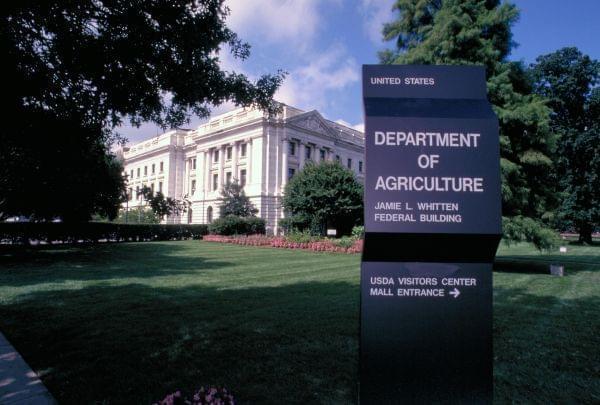How Ag Programs Fare Under Trump’s Proposed Budget For 2020

USDA
President Donald Trump’s 2020 budget proposal is getting a lot of attention for its call for more border protection, but it also makes major changes to agriculture programs.
Without providing many specifics, it outlines a plan to reduce the U.S. Department of Agriculture’s budget by about $3.6 billion — 15 percent of its total funding. Some programs face cuts, while others get a boost, but it’s all just a proposal at this point and likely won’t survive Congress as-is.That said, here are eight key numbers and takeaways:
- $20.8 billion: Proposed for USDA funding next year, down nearly 15 percent from 2019.
- $25.8 billion: What the administration estimates it’ll save from cuts or changes to crop insurance between 2020 and 2024, including limiting who can get subsidies and how high their subsidies will be.
- $166 million: Annual savings by eliminating the Food for Progress program, which was created to help agriculture sectors in developing countries.
- 5: Programs (like the Food Safety and Inspection Service and Animal and Plant Health Inspection Service) that are expected to make money from new “user fees,” though the budget doesn’t explain what they are and who would pay them.
- $3.1 billion: Estimated to be gained via a line item called “streamline conservation programs” between 2020 and 2024 ($8.87 billion between 2020 and 2029).
- 2: Number of times the Trump administration has proposed “America’s Harvest Box” since taking office. Essentially, it would mail American-grown produce to the 40 million people a month who receive Supplemental Nutrition Assistance Program benefits; though many estimates have found this idea to be prohibitively expensive.
- $500 million: Amount slated for the competitive ag research grant program Agriculture and Food Research Initiative, or AFRI. That’s about $85 million more than the amount of funding enacted in FY 2019.
- Thousands: Able-bodied adults who receive SNAP benefits that the administration says would get help finding employment. This is likely another attempt to encourage lawmakers to fund employment training, which did not make it into the most recent farm bill, and strengthen work requirements these adults must meet for the aid (regardless of the area’s job market).
Follow Madelyn on Twitter: @madelynbeck8
Links
- USDA’s Rural Broadband Plan Met With Citizen Criticism And Concerns
- USDA Official Asks Frustrated Farmers For Patience With China Trade Dispute
- Crop Insurance; Teaching Science Through Bad Examples; Faster Trains; Climate Change And Flooding
- Farm Income Down, Crop Insurance Costs Up
- High School Graduates Leaving Illinois; Online Privacy & ‘Right To Know’; Crop Insurance

